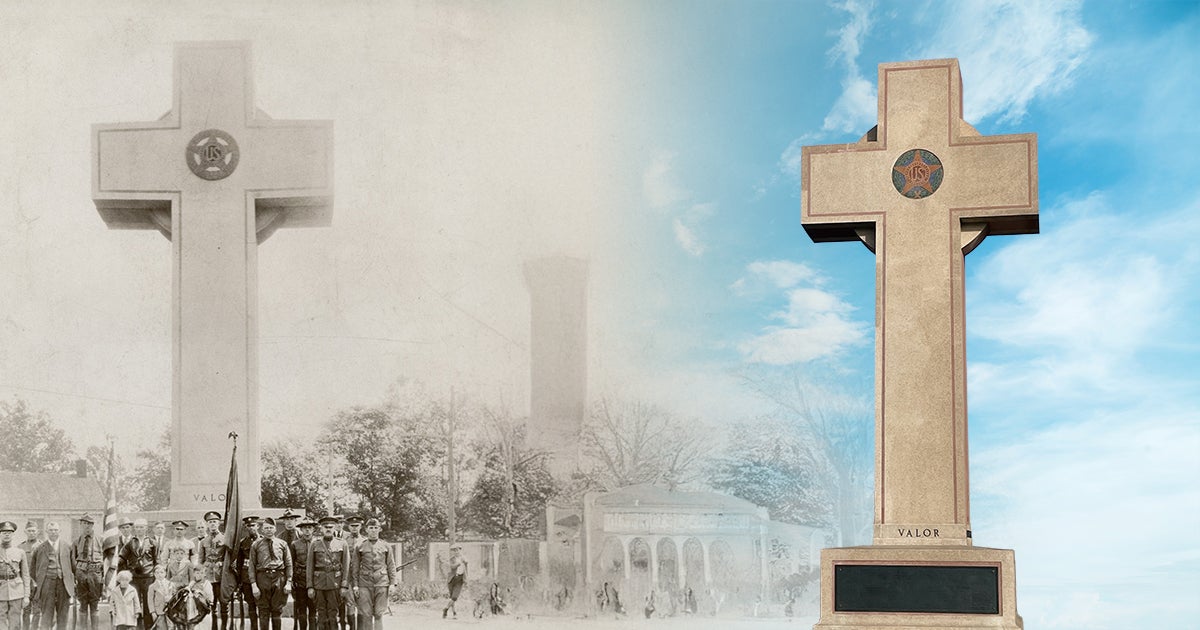
by Jorge Gomez • 4 minutes
The last Monday in May. For the majority of Americans, it marks the unofficial start of summer. A three-day weekend. Open the pool. Fire up the grill.
As many of us enjoy time off alongside friends and family this weekend, may we also take time to remember the reason behind Memorial Day.
Memorial Day is a solemn occasion for every American to reflect and honor the sacrifice of the military heroes who laid down their lives to defend our country and our freedoms.
One of the many ways to show appreciation and respect for America’s fallen warriors is by making sure our nation’s veterans and war memorials remain standing, especially monuments with religious imagery, symbols, references or scriptures.
Military memorials are a visible reminder of our country’s history and the cost of war. As the adage goes, freedom isn’t free. Our most cherished liberties—including the fundamental right of religious freedom—come at a cost. And that price is often paid by brave service members who fight and give their last full measure of devotion to keep our Republic and our Constitution standing.
That’s why First Liberty continues fighting to ensure military memorials are not torn down.
In observance of Memorial Day, we’re looking back on the precedent-setting U.S. Supreme Court ruling that kept the Bladensburg Peace Cross standing tall. The impressive memorial is an ever-present reminder for all Americans to never forget the valor, endurance, courage and devotion it takes to secure the blessings of liberty.
Rock of Ages: 100 Years of the Bladensburg Peace Cross
A century ago, the Bladensburg Peace Cross was built to honor 49 heroes of Prince Georges County, Maryland who gave their lives in WWI. The mothers of these men who died in the Great War formed a committee with the purpose of building a memorial that would commemorate the county’s fallen.
Martha Redman—whose son William was the first Navy sailor in the county to perish in the war—said the memorial was like a “gravestone” to help remember her son.
In September 1919, a site dedication ceremony was held where the memorial would one day stand. The mothers endeavored to build it knowing that we would forget their sons’ sacrifice unless we had some way of remembering. For years, they gave their utmost to see that the memorial would be built. But the initial momentum experienced some setback due to a lack of funds.
In 1922, the effort to build the memorial was turned over to newly returned veterans of The American Legion, who agreed to take on the project as a way of honoring their fallen brothers. The American Legion embarked on a four-year journey of intense fundraising to complete the monument.
With the help from The Legion, the Gold Star Mothers were able to see the monument completed and inaugurated in 1925. The memorial, standing over 30 feet high, was situated at the terminus of the National Defense Highway in Bladensburg—a highway itself dedicated to the memory of those lost in WWI.
Like many WWI memorials, they intentionally chose the shape of a cross for the monument, mirroring the haunting rows of crosses that marked Europe’s battlefields.
The seal of The American Legion is prominently emblazoned on the two primary faces of the monument at the intersection of the cross arms. At the heart of the memorial’s base, we find four words that pay tribute to these “Boys of Bladensburg,” who gave their last full measure: Valor, Endurance, Courage, Devotion.
Beneath those etchings is a bronze plaque listing the names of the 49 fallen heroes, along with the dates 1917 and 1918, and the inscription: This Memorial Cross Dedicated To The Heroes of Prince George’s County Who Gave Their Lives In The Great War For The Liberty Of The World.
In 2019—100 years after the first shovel broke ground in Bladensburg—First Liberty secured a victory at the U.S. Supreme Court that saved the memorial from destruction. The historic 7-2 ruling in The American Legion v. American Humanist Association upheld the memorial as constitutional.
But the Supreme Court’s order didn’t just save a single monument in Maryland. It was a triumph that set a precedent protecting memorials nationwide.
Only a short drive away from the Bladensburg Peace Cross, in Arlington National Cemetery, is the Argonne Cross, another WWI monument built to honor the more than 26,000 Americans who died during the 1918 Meuse-Argonne Offensive. Also located in Arlington is the Canadian Cross of Sacrifice, a memorial to the Americans who volunteered for the Canadian Expeditionary Force and lost their lives in WWI.
On the West Coast, we find memorials such as the Mojave Desert Memorial Cross and the Mount Soledad National Veterans Memorial, constructed to honor U.S. servicemen who died during WWI, WWII and the Korean War.
The Bladensburg precedent ensures these memorials—and countless others throughout our country— will not be bulldozed to the ground. They can remain standing as symbols of remembrance to our fallen service members.
The religious liberty we enjoy today is owed to the Boys of Bladensburg and every service member who sacrificed all of their tomorrows.
On Memorial Day, we thank our military heroes for their sacrifice—especially the ones who never made it home. We can forever honor them through timeless memorials, the gravestones that keep the memory of the fallen alive in our public consciousness.